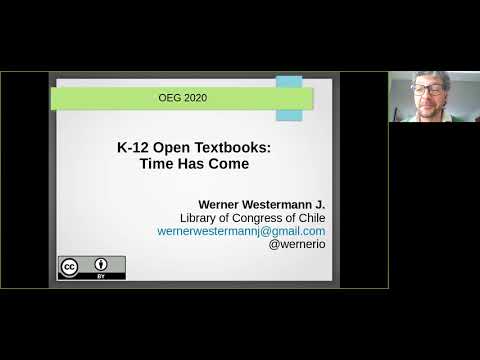Author: Werner Westermann
Institution: Library of Congress
Country: Chile
Topic: Connecting Open Education to Primary and Secondary (K-12) Education
Sector: K-12
UNESCO Area of Focus: Building capacity
Session Format: Presentation
Abstract
Some 1.4 billion students and youth across the planet was the result of the sudden and unprecedented educational disruption caused by the COVID-19 outbreak. The main response globally to mitigate the impact in learning has been transitioning to remote or distance learning, not only to mitigate the immediate disruption but also develop more open and flexible education systems for the future.In a context of school K-12 education and a renewed interest in digital educational resources, what will happen with the K-12 printed textbook?
Since the 19th century, the Textbook, a book(s) that serves the purposes of the learning-teaching process, has been the main public investment for educational resources till these days. Especially after 1970, almost every country has a wide-spread public K-12 printed textbook provision program, and has shown evidence-based impact in better learning outcomes.
But as education transits from face-to-face modality towards a more distance, online vitual setting, many questions will arise about the role of the printed textbook and the provision program will be under heavy scrutinity and assessment of its outreach and impact.
As Open Educational Resources (OER) and Open Education, in general, emerge as a viable and sustainable alternative model, its principles can guide us to rethink the K-12 textbook, and its relation with other educational resources, through the lens of openness.
Openness can reshape and strengthen the publicly funded K-12 Textbook programs in a context of serious funding restriction and restraints taking advantage of: 1) existing and successful experiences of K-12 open textbooks initiatives; 2) research evidence about the adoption and positive impact of open textbooks; 3) maturity of technological infrastructure to develop, delivery and stewardship of open textbooks; 4) a growing mass of open content to be reused and adapted for open textbooks.
Openness can also strengthen and diversify competitiveness of the publishing industry by embedding innovative ways for production and delivery of open/public educational resources and engaging with end user’s expectations and assessment to better suite their needs.
Come and join this session to discuss about the future of education for our boys, girls and adolescents!!
Keywords
K-12 Textbook, Digital Textbooks, Open Textbook, Pressbooks, H5P, Kolibri
